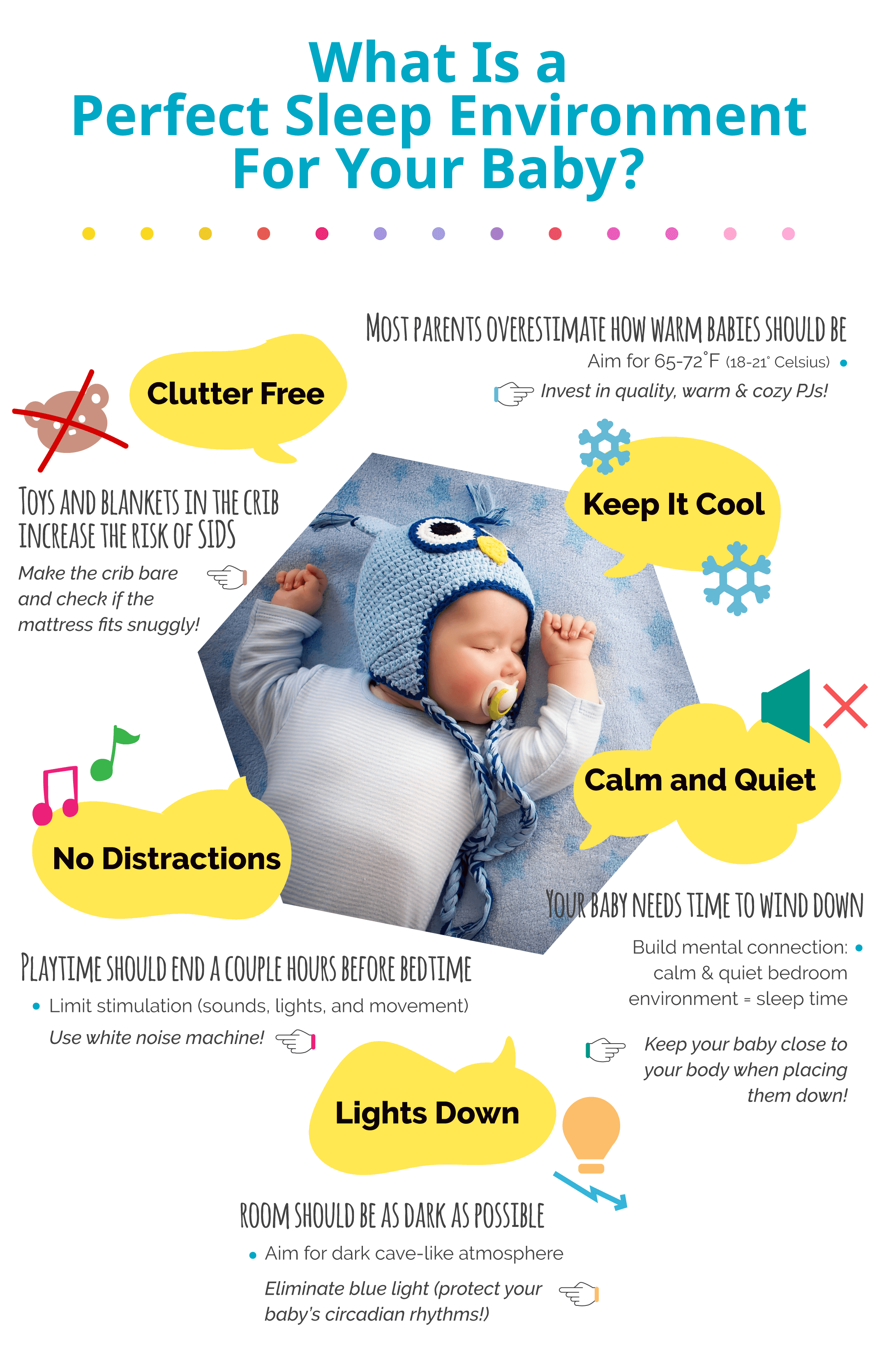How to Set Up An Ideal Sleep Environment for Your Baby

Your child's sleep environment plays an important role in determining how much rest he actually gets. Think about the area you sleep. You have certain conditions that make it easier to fall asleep and get the best rest. That's true for babies and children as well. I'm here to share some helpful tips so you can set up a restful sleep location for your baby so he gets the restorative sleep he needs.
1. Clutter free
Not only is it important to keep your child's crib clutter free as per guidelines to protect against SIDS, but it also really sends the message to your kids that their sleep space (whether it's a crib or a bed) is meant for sleeping. Piling your child's sleep location with toys and stuffed animals will make it difficult for them to focus on the task at hand- getting to sleep!
2. Keep it cool
As adults, we tend to overestimate how warm we feel babies should be at all times, and this is definitely true for the temperature of their sleep environment. The ideal room temperature for a baby or child is actually a little on the cooler side, between 18 to 21 degrees Celsius. If you're worried about the baby being cold, you should dress them in a wearable blanket or sleep sac over their jammies so they stay comfy cozy.
3. No distractions
Many parents resort to colorful light shows and aquariums to project sound and light into their child's nursery or bedroom while they're trying to fall asleep, but this is completely counterproductive and way too stimulating. For babies especially, the light and sound that some of these products feature are going to be much to entertaining and they aren't going to want to fall asleep while all that excitement is going on.
4. Turn the lights down, way down
When you say goodnight to your child and it's time for sleep, it's important to have their room as dark as possible. This helps them to fall asleep more easily because light (especially from screens like televisions, computers and other electronics) actually inhibits melatonin production, which is the sleepy hormone released when our bodies are winding down for sleep. By having their room as dark as possible (for both naps and night sleep) this helps ensure that their brains send the signal to their bodies that it's sleepy time.
5. Calm and quiet
This seems to be a pretty obvious tip, I mean we all like to have peace and quiet when we sleep, right? But you would be surprised at how many people say "get the baby used to sleeping in a noisy environment." It's important to respect your child's sleep times, so this means that limiting the noise in the house during naps and as bedtime approaches starting to quiet down the entire house to get ready for sleep. If you find it difficult to keep the noise levels down, whether you live in a smaller space, or have older children, the use of a white noise machine works great at muffling some of the external household noises while your little one snoozes.
6. Consistency is key
Speaking of sleep location, it's super important to choose a consistent place for your child's sleep to take place. The idea with this is to create a sleep association with that place so that your little one knows their crib/bed is for sleeping because that's where all their sleep takes place. You know how great it feels to sleep in your own bed after you've been away on a vacation or trip? We want to create that same kind of sleep association for our children.
A child's sleep environment can make much more of an impact than you may think. Huge improvements can be seen in little one's sleep after a parent creates a darker sleep environment, or turns off the nursery aquarium. By creating some small changes, you might see some huge improvements in your child's sleep habits.
 Guest blog by Stephanie Power, Certified Sleep Consultant and Founder of Three Little Birds Sleep Solutions
Guest blog by Stephanie Power, Certified Sleep Consultant and Founder of Three Little Birds Sleep Solutions
In addition to receiving her Child Sleep Certification through the Family Sleep Institute, Stephanie holds a B.A. in Psychology and is the mother of her baby boy, Sullivan. Stephanie first became interested in infant and child sleep when she and her husband brought their baby boy home from the hospital and experienced the overwhelming fatigue that all new parents go through with a newborn. After researching and learning about healthy child sleep habits, she was able to coach her son to learn the self soothing skills needed in order for him to sleep soundly.
Interested in writing a guest blog for Sleeping Baby? Send your topic idea to pr@sleepingbaby.com.
All data and information provided on this site is for informational purposes only. Sleeping Baby makes no representations as to accuracy, completeness, current-ness, suitability, or validity of any information on this site and will not be liable for any errors, omissions, or delays in this information or any losses, injuries, or damages arising from its display or use. All information is provided on an as-is basis.
Image courtesy of Danilo Rizzuti / FreeDigitalPhotos.net

